The Noto Peninsula is home to the production sites of Suzu ware (Suzu-yaki), a distinctive type of pottery representative of medieval Japan. Although most of the kilns making this style of pottery were destroyed by the earthquake that struck on New Year’s Day 2024, the potters are enthusiastic about rebuilding them. We talked to one artist about his thoughts on the reconstruction and his underlying view of nature.
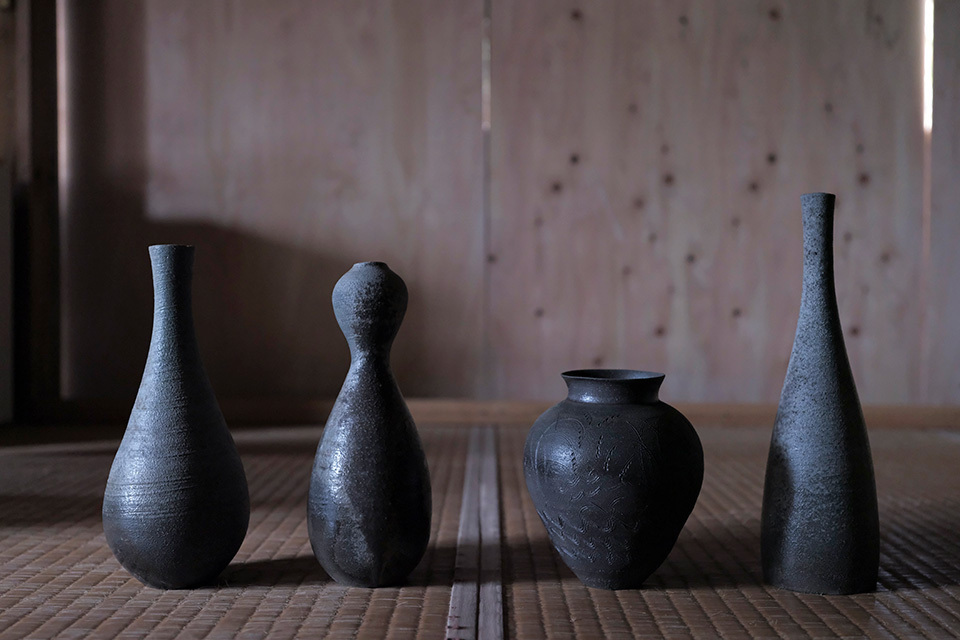
Suzu ware pieces—produced by SHINOHARA Takashi—that luckily escaped damage from the earthquake.
With its distinctive clear-cut form and temperate dark-gray color derived by firing iron-rich clay while it undergoes a reduction reaction, Suzu ware gets its name from the area where it is mainly produced: Suzu, an old port town situated on the northeastern tip of the Noto Peninsula. First produced in the latter half of the 12th century, Suzu ware was once distributed widely across the Japanese archipelago, but soon vanished in the late 15th century, taking it into the realms of illusive ancient pottery. Revived in the 1970s thanks to more advanced surveys and research, as well as through the passion of the local people, the pottery form eventually gained recognition as a traditional craft.
In recent years, the industry has been prospering, with more than 50 potters making the pottery and more events taking place outside the prefecture. But then, on January 1, 2024, a massive magnitude-7.6 earthquake destroyed most of the kilns in Suzu, creating another existential crisis for Suzu ware.
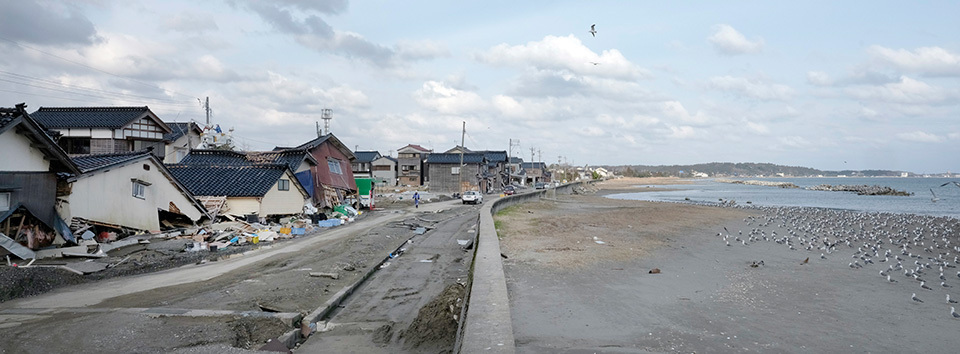
The town of Suzu faces an inland sea on the northeastern tip of the Noto Peninsula. Many houses were destroyed by the earthquake.
A potter of Suzu ware, SHINOHARA Takashi, had been sacrificing his New Year’s holiday to work on a piece for an exhibition when the fateful earthquake struck. He recalls, “Although I had experienced many earthquakes before, this was the first one where I really felt that my life was in danger. When electricity was restored at the end of February and I turned my workshop’s breaker back on, the potter’s wheel started spinning. That’s when I realized that I must have been in such a panic that I had fled without even stopping to turn off the wheel.”
This is the third time that Shinohara’s workshop has been damaged by a quake. Relatively large tremors had previously hit in 2022 and 2023, the second one destroying his kiln. Shinohara had spent five months rebuilding the kiln after that, but it was destroyed in the latest quake without him ever having fired a single piece in it.
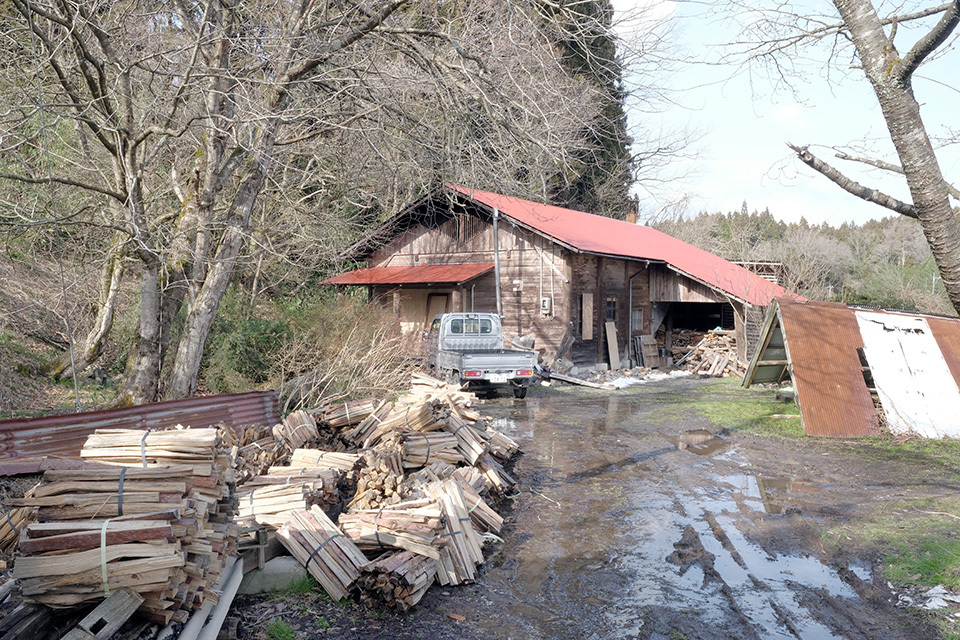
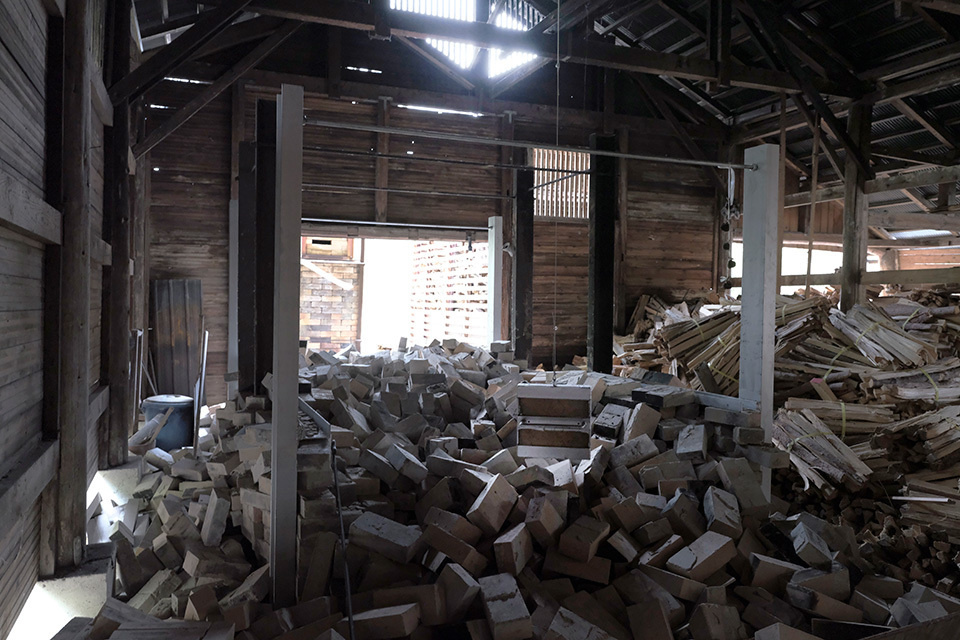
Shinohara’s workshop in the mountainous area of Suzu. The brick-built kiln inside the workshop completely collapsed during the January 1 quake, with firewood scattered everywhere.
Still, Shinohara maintains his optimism. “When the disaster struck last year, I was thinking about closing my business altogether, but I haven’t had any such thoughts this time around. The kiln that was destroyed was not mine per se, but rather one built with the help of many people who wanted to preserve the traditional wood-fired kiln for the future of Suzu ware,” he explains. “None of the younger potters here want to stop what they are doing, either. And that’s reassuring. That’s why I haven’t given up on the future of Suzu at all—I am not pessimistic.”
Having seen the upheaval along the coast that was caused by the earthquake, along with the roads cut off by landslides and the buried tunnels, Shinohara goes on to say, “I was astonished by the sheer power of nature. Compared to that, we are nothing.” Even now, with the modern gas kilns—which are more efficient with their straightforward temperature control—Shinohara still prefers to produce his pottery in wood-fired kilns. “I don’t even put a thermometer in the kiln. I fire the pottery by looking at the color inside the kiln and sensing the heat with my hands. Working that way makes me feel as if I am one with nature.”
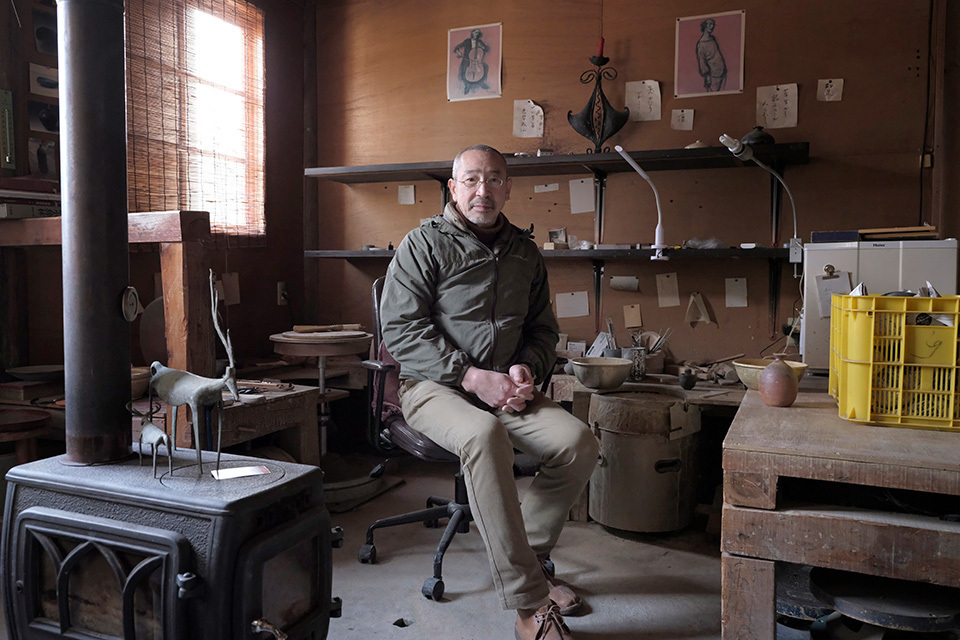
Shinohara has been making Suzu ware pottery since 1992, and currently chairs Suzu-yaki Soenkai, the association of Suzu ware.
While Suzu ware is a type of unglazed pottery, the ashes from the burned wood interact with the clay to produce a natural glaze-like sheen. Perhaps the reason why the potters are not discouraged—no matter how bad the devastation caused by the earthquakes—is that they can see through their work that nature does not always act the way we want it to, and that therein lies its beauty.






























